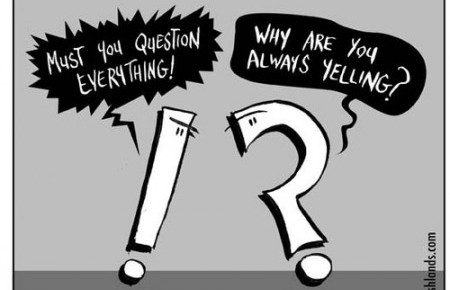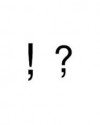The Most Unloved Marks in English
 With communication so often in written form these days, there’s a lot of room for misinterpretation without the advantages of intonation, expression, and environment – but we’ve dug up some punctuation marks that could really help get that message across clearly.
With communication so often in written form these days, there’s a lot of room for misinterpretation without the advantages of intonation, expression, and environment – but we’ve dug up some punctuation marks that could really help get that message across clearly.
Love it or hate it, punctuation is a crucial part of language that has been around since the Ancient Greeks first started orating and stepping on stage, and will be around for another 2000 years… hopefully! Dramatists started using punctuation to indicate speech patterns and pauses to actors, the trend caught on, and we’ve never looked back.
These days most of us know a comma from a full-stop, a bracket from a hash mark, and a semi-colon from a colon (or maybe not the latter, which we’ll look at another time) – but there are some punctuation marks that rarely see the light of day.
As English speakers, we rely heavily on sarcasm and irony as a form of wit - actually, as a form of communication - so these recent discoveries will help with clarity in the written form when the situation necessitates.
My personal favourite is the sarcastrophe (^): this unheralded triangle symbol used around words and sentences denotes sarcasm, as in Groucho Marx’s famous quote ^I never forget a face, but in your case I'll be glad to make an exception^, or a more localised version ^It never rains in England^.
![]() Many symbols have been proposed over the years to represent the often misunderstood use of irony, with the most popular option being a lightly raised backwards question mark – but could this be too similar to the more prevalent symbol for a rhetorical question?
Many symbols have been proposed over the years to represent the often misunderstood use of irony, with the most popular option being a lightly raised backwards question mark – but could this be too similar to the more prevalent symbol for a rhetorical question?
Next on the podium would have to be the interrobang/interabang (‽), a combination of question mark and explanation mark denoted by the superimposition of the two. Think of all that time wasted typing ‘?!’ when you could have had just the one option!
 There are also the interabang’s close cousins, the exclamation comma and question comma, for all those times you weren’t quite finished exclaiming or questioning - our current options don’t allow pause for thought, they just end the sentence abruptly!
There are also the interabang’s close cousins, the exclamation comma and question comma, for all those times you weren’t quite finished exclaiming or questioning - our current options don’t allow pause for thought, they just end the sentence abruptly!
Honorable mention must go to the pilcrow (¶), an underutilised paragraph mark that sounds so quaint, you just want to use it so you can say it. The symbol is used primarily in desktop publishing these days, to signify a carriage return (old school typists will know what that is!), but it's also effective as an indent or new paragraph marker.
The section sign is a super cool symbol (§), used regularly in legal circles, but rarely by us common folk. It also has some impressive aliases like ‘the legal doughnut’, ‘the hurricane’, and the more literal and not so exciting ‘double S’. Its main use is to refer to a particular section of an article or document.
Last but not least, the dangerously under-appreciated dagger (†) that you may recognise from its cameo appearances to denote a wicket-keeper in cricket, to show a move was check or check mate in chess, and in mathematical or scientific fields in varying forms – but we’re waiting for its starring role one day.
So it seems there have been unknown dark forces at work repressing some awesome punctuation marks, for reasons unbeknown to us, but we want a renaissance, and we want it now – will you join our campaign to save the interabang and its friends?!


